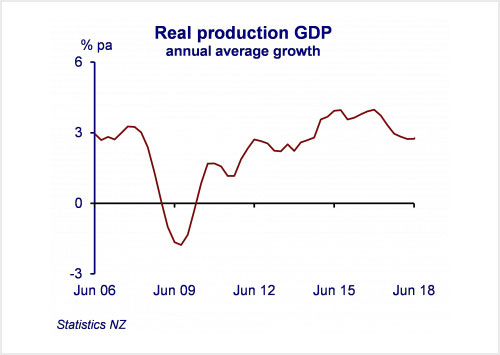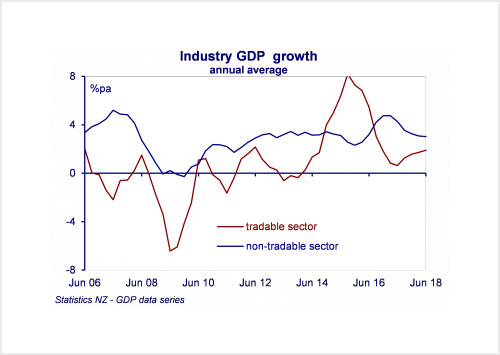Statistics New Zealand’s GDP release on 20 September 2018 showed that for the 2018 June quarter that production GDP had increased by 1 percent. This translates to an annual increase in GDP for the year to June 2018 of 2.7 percent.
The quarterly increase of 1 percent is the highest quarterly increase since June 2016, and this result halts the gradual decline in annual GDP from its high in the year to December 2016 of 4 percent.
Overall this result can be seen as a solid result for New Zealand’s economy with quarterly growth coming from a broad-base of industries. Though New Zealand’s reliance on primary industries is reflected in the 4.1 percent increase in the agriculture, forestry and fishing industry providing the largest impact on the quarterly result.

A broad overview of the June annual GDP shows that all industries except Mining (5.8 percent decrease) increased for the year. In percentage terms retail trade and accommodation (5.8 percent) and transport, postal, and warehousing (5 percent) had the largest increases for the year. Though in absolute terms professional, scientific, technical, admin and support ($1,099million), and retail trade and accommodation ($963million) had the largest increases for the year.
Looking at the results in more detail shows that the construction industry grew by 2.3 percent for the year to June 2018, an improvement on its last two results, where growth was limited by business closures and the heavy losses by Fletcher Building. Given the strong demand for residential and commercial construction this industry should be experiencing much stronger GDP growth. In addition, within the primary industries, it is the forestry industry leading the way with a 6.8 percent annual growth in GDP for the year to June 2018, compared to the agriculture industries 0.5 percent growth.
Splitting production GDP into tradable and non-tradable sectors as shown in the figure below, reveals that New Zealand’s GDP growth since the end of 2016 has being driven by our non-tradable sector. This trend was continued in the latest results with a 3.1 percent growth for the year to June 2018 for the non-tradable sector, in comparison to 1.9 percent growth seen in our tradable sector.
